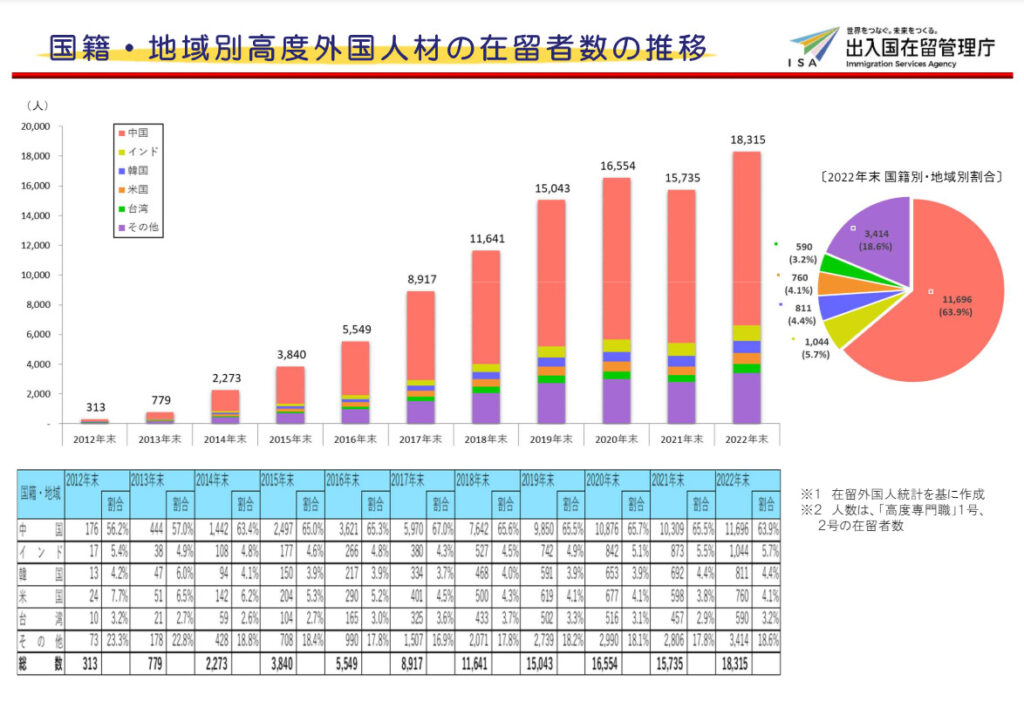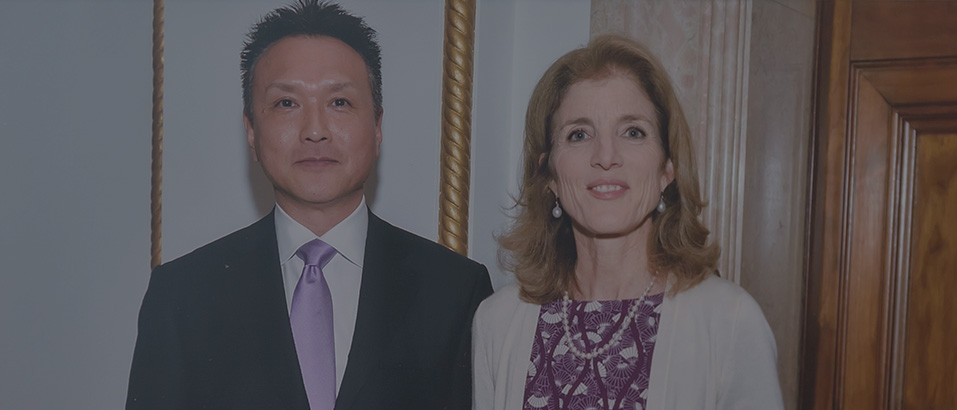Hello, this is Inada of IMS Legal Professional Corporation. Last time, I summarized the differences between the "Highly Skilled Professional" Category 1 and Category 2, and this time I would like to continue to cover topics related to highly skilled professionals.
The Japan System for Special Highly Skilled Professionals (J-Skip) is a new immigration framework introduced in Japan to facilitate the acceptance of highly skilled foreign talent. Originally, the "Highly Skilled Professional" visa was granted under a point-based system to encourage the employment of highly skilled foreign professionals. However, since April 2023, a new category has been added that doesn't rely on the point system, but rather offers even more favorable conditions. This category includes the "Highly Skilled Professional (i), (ii), (iii)" statuses, and this enhanced provision is known as "J-Skip."
Individuals who qualify under the J-Skip program receive a Special Highly Skilled Professional certificate. Although the front of their residence card looks the same as those of traditional highly skilled professionals, the back of the card is marked with "Special Highly Skilled Professional."
J-Skip Characteristics
One distinctive feature of J-Skip is the high annual income requirement. To be recognized as a "Special Highly Skilled Professional," the criteria are simple and solely based on "annual income" and "educational or professional background":
- Highly Skilled Professional (i) for advanced academic research activities (such as university professors and researchers).
J-Skip Requirement: Annual income of over 20 million yen with a master's degree or over 10 years of professional experience. - Highly Skilled Professional (ii) for advanced specialized/technical activities (such as engineers working in companies).
J-Skip Requirement: Same as above. - Highly Skilled Professional (iii) for advanced business management activities (such as corporate executives).
J-Skip Requirement: Annual income of over 40 million yen with a minimum of 5 years of professional experience.
The J-Skip criteria are notably high in terms of salary but make the application process considerably simpler than the point system. While the traditional point system evaluates the potential to excel as a highly skilled professional, J-Skip focuses on immediate expertise and capabilities, emphasizing actual performance over potential.
Expanded Preferential Treatment Under J-Skip
The expanded preferential measures under the new system, compared to the traditional point-based system, include three main benefits:
- Employment of foreign domestic workers: Households with an annual income of over 30 million yen can employ up to two domestic workers without needing to meet specific household conditions.
- Spousal employment: The range of jobs available to spouses has been broadened, allowing them to work without meeting certain career qualifications.
- Use of priority lanes at major airports: This facilitates quicker movement through immigration and security for those who frequently travel internationally.
These enhancements seem to be designed with affluent households that have high dual incomes and busy global business professionals in mind, aiming to provide convenience and support for their active international lifestyles.
Relaxation of Spouse Employment Requirements?
One particular concern arises regarding the employment of spouses. While preferential measures have indeed been expanded to make it easier for spouses to work, it presupposes that the spouse has resigned from their overseas job to come to Japan, which can be somewhat disappointing. Nowadays, more companies allow full remote work, yet it seems that continuing full-time employment with an overseas company while having a long-term stay in Japan is still not feasible. Even if there are some "Highly Skilled Professionals" whose spouses wish to work remotely for overseas companies, they represent a very small minority, and their impact on the Japanese economy is quite limited. I wonder if there is no particular demand from foreigners regarding this issue, or if there is a deliberate intention, perhaps wanting couples to settle and work in Japanese society for a long period.
Chinese Nationals #1 in J-Skip Numbers
The number of highly skilled foreign nationals residing in Japan has been increasing year by year. The chart below shows the trend up to the end of 2022, but with the introduction of J-Skip and the subsidence of the COVID-19 pandemic, it looks set to expand significantly in the future.

As of the end of 2022, Chinese nationals accounted for 63.9% of highly skilled foreign residents, a significantly high proportion compared to the overall percentage of Chinese nationals among all types of resident statuses (24.8%). India ranks second, with 5.7% of highly skilled foreign nationals, which is considerably higher compared to the overall percentage of Indian nationals among all resident statuses (1.4%). It will be interesting to see how these figures evolve in 2023 and 2024.
*For more information on the Special Highly Skilled Professionals (J-Skip), please see here: https://imsvisa.support/en/work-visa/j-skip-visa/
Reference:
Special Highly Skilled Professionals System (J-Skip) | Immigration Services Agency (moj.go.jp)
About the acceptance status of highly skilled foreign professionals
For more information, please contact us below ↓
https://imsvisa.support/en/contact/





